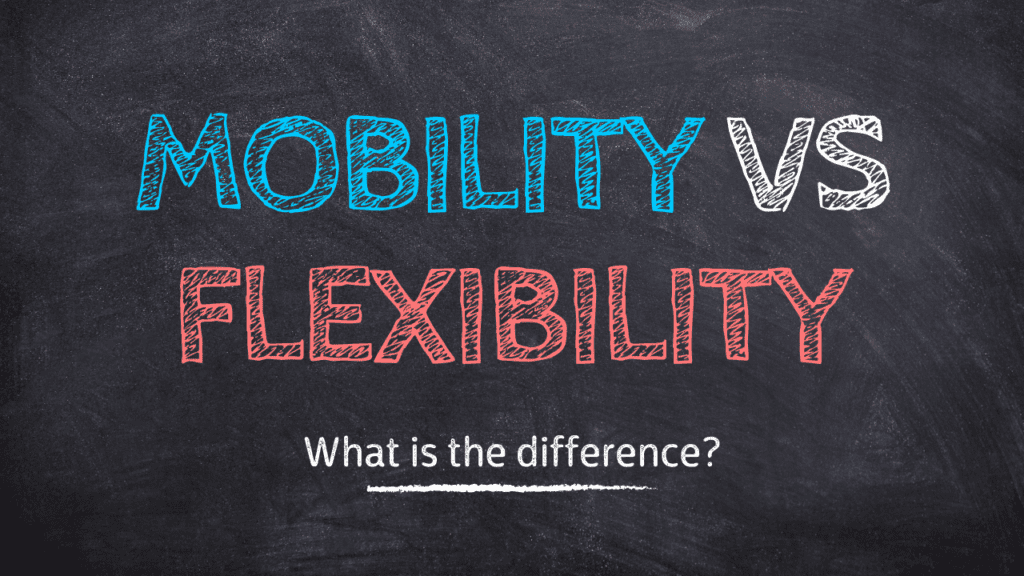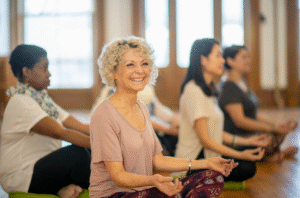
Mobility vs Flexibility: What is the difference? – Mobility Suite
- Dr. Mitch Israel
- Mobility, Stretching

Mobility vs Flexibility: Understanding the Key Differences for Better Movement
In the realm of fitness and wellness, terms like mobility vs flexibility are often used interchangeably. However, they represent distinct concepts that play different roles in our movement capabilities and overall health. Understanding the difference between mobility vs flexibility is essential for optimizing performance, preventing injuries, and maintaining functional movement patterns. Let’s delve into the details and explore how each contributes to our physical well-being.
Defining Mobility and Flexibility
Mobility: Mobility refers to the ability of a joint to move actively through its full range of motion. It involves not only the flexibility of muscles and connective tissues surrounding the joint but also the control and stability provided by the muscles. In other words, mobility encompasses both flexibility and strength within a joint’s range of motion. It’s the dynamic aspect of movement that allows us to perform tasks like squatting, lunging, and reaching without restrictions or discomfort.
Flexibility: Flexibility, on the other hand, refers to the ability of a muscle or group of muscles to lengthen passively to allow for greater joint range of motion. It primarily involves the elasticity and extensibility of muscles, tendons, and ligaments. Flexibility enables us to achieve and maintain various positions and postures, such as touching our toes or performing a split. While flexibility is important for joint health and function, it’s only one component of overall mobility.
Active vs Passive Range of Motion
Active Range of Motion: Active range of motion refers to the movement capacity of a joint when it is actively controlled by the muscles surrounding it. This is where mobility comes into play. For example, the ability to squat deeply or lift your leg high during walking relies on active range of motion. Improving mobility involves not only increasing flexibility but also enhancing muscular strength, coordination, and neuromuscular control to move more efficiently and effectively.
Passive Range of Motion: Passive range of motion, on the other hand, refers to the movement capacity of a joint when it is moved by an external force, such as gravity or a stretching partner. This is where flexibility is primarily demonstrated. For instance, when you use your hand to pull your foot towards your glutes in a quadriceps stretch, you’re testing your passive range of motion. While passive stretching can improve flexibility, it doesn’t necessarily translate to improved mobility unless accompanied by active strength and control.
Importance of Both Mobility and Flexibility
Both mobility vs flexibility play crucial roles in our overall physical health and performance:
- Mobility allows us to move freely and efficiently in various activities and sports, reducing the risk of injuries and enhancing performance.
- Flexibility helps maintain joint health, prevent muscle imbalances, and improve posture and movement mechanics.
It’s not about choosing one over the other; it’s about combining them effectively for optimal results. Improving mobility requires flexibility within the targeted joint. Therefore, a well-designed flexibility and mobility training program usually begins with flexibility (passive) stretches followed by mobility (active) exercises. This sequence ensures that your joints are adequately prepared for movement and helps maximize your progress.
This approach guides the design of all my mobility training programs within the Mobility Suite Membership. Patients and clients alike have seen impressive results from these carefully crafted programs.
Finding Balance and Integration
Optimal movement requires a balance between mobility vs flexibility, as well as integration of both components into functional movement patterns. Incorporating a variety of joint mobility exercises, such as dynamic stretches, joint mobilizations, and strength training movements, into your routine can help improve both mobility and flexibility simultaneously. Additionally, mindful movement practices like yoga and Pilates can enhance body awareness and coordination, further supporting joint health and function.
Curious about a program that combines flexibility and mobility training? Click the link below to start your Mobility Training Program today!
Conclusion
In conclusion, understanding mobility vs flexibility is crucial for enhancing our physical well-being. While mobility encompasses both flexibility and strength within a joint’s range of motion, flexibility primarily involves the passive lengthening of muscles. By integrating targeted joint mobility exercises and emphasizing the benefits of flexibility training, we can optimize our movement capabilities, reduce the risk of injuries, and enhance overall performance and well-being. Prioritizing both mobility and flexibility in your fitness regimen will lead to improved health, whether you’re an athlete or just looking to move better in daily life.
Need a consistent plan for Mobility Training?
Do you know you need to train your mobility, but you don’t know where to start? Don’t worry, I have you covered! That is exactly why I created the Mobility Suite App so you can start mobility training for a fraction of the price of seeing a physical therapist and/or chiropractor!
I’ve created a library of mobility training programs (from hip mobility to spinal mobility) that you can have on-demand access to. These programs were carefully crafted to help you get the most out of mobility training with only minutes of work per training session! Less is more with mobility training. The most important thing is consistency! So, if you need a consistent strategy, start your FREE 7-day trial to my Mobility Suite App!
Why offer a 7-day free trial? I firmly adhere to the “1-week rule.” If you commit to consistent mobility training for one week, you’ll gather enough data to determine if it’s right for you. I’m confident that these programs will benefit you, and I want to give you the chance to experience it firsthand, completely free for one week. This way, you can determine whether mobility training aligns with your goals and needs without any financial commitment!
You have nothing to lose but the stiffness in your joints. Don’t let discomfort hold you back any longer— tap/click the button below to join today and take the first step toward a more mobile and pain-free lifestyle!




